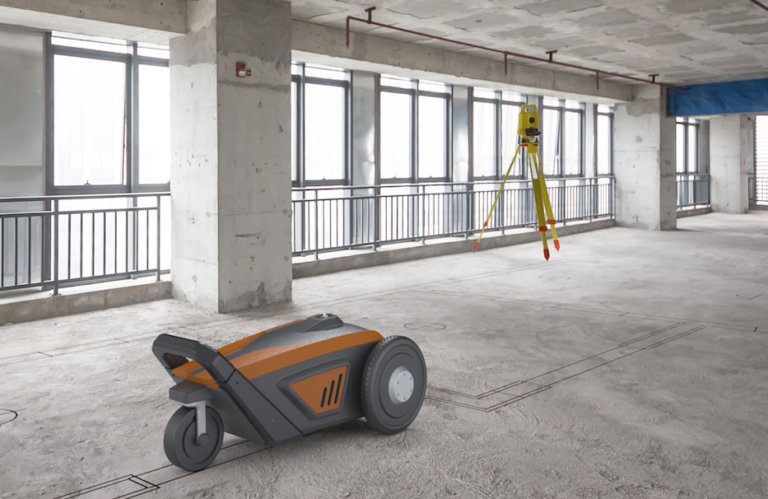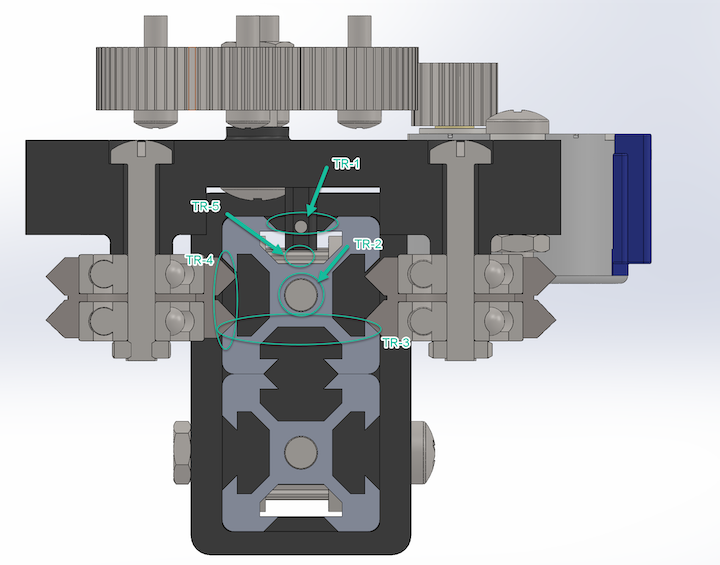Time to read: 5 min
Welcome to our first edition of Engineering Heroes: a series where we interview the mechanical engineers behind innovative products to uncover actionable tips, advice, and best practices to help you optimize your own mechanical design workflows.
For this edition we zoomed in with Peter Lee, Sr. Mechatronics Engineer at Dusty Robotics to learn about his go-to resource to learn about novel mechanisms, his approach to increase robustness for field robots, and the single habit that’s made a huge difference in his engineering career.
Peter has a BA in mechanical engineering and a PhD in physics in the field of high temperature superconductivity. Before landing at Dusty Robotics, he conducted postdoctoral research at Northwestern University on super cool topics including cryogenic, radioactive, and superconducting mechanisms and ultra high vacuum and precision rotational instrumentation and worked at Lam Research Corporation as a product engineer developing dielectric etch products used in the fabrication of high density solid state memory devices. Peter is also somewhat of a renaissance man and has years of experience in machining.
At Dusty Robotics, he leads mechanical engineering for their field printer robot designed for the construction industry. The field printers are two-wheel robots with a single caster in the back that drive autonomously in construction sites to perform site layout with greater speed, precision, and efficiency versus traditional labor-intensive processes that use error-prone hand metrology.
Without further ado, here’s what we learned from Peter.
What’s the best habit you’ve picked up in your career as a mechanical engineer?
Peter: That’s easy: Ask questions and never try to solve the problem by yourself. You can always get a fresh perspective.
For example, last year I was designing this mount for our equipment and all it had to do was hold some equipment at a predefined height. But I was trying to overcomplicate the thing. Being the mechanical engineer that I am, I was like, ‘what are the filaments here?’ and blah blah blah. And then I came up with this really complicated mechanism until one of our interns looked at it and said, “Hey, by the way, can you just use a stick?” I thought, wow. I didn’t know why I hadn’t thought of that but it totally made sense! Sometimes a stick is superior to a thousand dollar monster machine.
So this demonstrates the principle: there’s always a fresh insight that you might have missed.
“Ask questions and never try to solve the problem by yourself. There’s always a fresh insight that you might have missed.”
Tell us about a difficult engineering challenge you had to solve recently.
Peter: One of my jobs is to make sure that whenever our robots get mistreated at the construction site, like say for example, it rams into a concrete wall at full speed, that it doesn’t trigger complete failure mode. So I have to make sure I design parts that don’t undergo plastic deformation or that won’t change the robot’s calibration, because we’re working with extreme precision.
In the design process I constantly asked myself: if a collision occurs do I let the deformation happen, but in a controlled way? Or do I build some spring mechanism to kind of absorb it? Another way you can manage the collision is to let the plastic deformation happen, but take care of what happens afterwards with a series of software calibrations. In general though, plastic deformation in precision robots is not good, because from a structural mechanics point of view, it introduces fatigue-related structural failure.
Ultimately the solution was to design the robot to flex a little bit and absorb the shock when it collides with a hard object. It really comes down to the fundamentals of flexural mechanics and engineering our parts to handle all these different collision scenarios.
What are your go-to resources to sharpen your engineering skills?
Peter: I still actively read academic papers in the field of high-temperature superconductivity. I also read a lot of medical papers, especially on the topic of building novel mechanisms to get into tight corner spaces. This really helps me keep my brain fresh and up to date. Most commercial companies building robots don’t want to share their trade secrets, but in academic papers they reveal all of the stuff they find and it’s right there for anyone to read!
“Most commercial companies building robots don’t want to share their trade secrets, but in academic papers they reveal all of the stuff they find and it’s right there for anyone to read!”
What do you think is the best part about being a mechanical engineer?
Peter: I love that as a mechanical engineer you work with nature. Every day you ask, ‘how do I build something out of something that already exists?’ And nature doesn’t lie. Everything follows the law, a set of principles. This gives me the ability to model things very precisely and to predict failure modes. I like that everything is predictable and can be systematically designed upon.
At the same time, when you design something the possibilities are seemingly infinite. In early design, the final form can be anything. The challenge is to make design decisions that optimize the geometry, cost, robustness etc. There are infinite ways to do it and my job is to find the best balance between all the possible solutions.
I also really appreciate the teamwork needed to bring a physical product to life — mechanical engineering is not the only thing that’s required. For example, you need the brains of the robot. You need to have the human to machine interface. By definition, it’s a highly multidisciplinary field.
“In early design, the final form can be anything. There are infinite ways to do it and my job is to find the best balance between all the possible solutions.”
How has Fictiv helped empower you in your job?
Peter: With the pandemic, all of us at Dusty were affected either directly or indirectly in the beginning. I’m the only mechanical engineer here and my background is in high temperature superconductivity with some machining experience — not in supply chain management.
So when COVID hit last march, all these machine shops started shutting down and Fictiv was one of the companies that’s really been able to solve our supply chain issues. Otherwise I wouldn’t have been able to get my job done and meet the deadlines we had. I had to deliver this robot on time, but with all the shops closing down I feared there would be a one or two month delay. Fictiv helped me meet our original timeline despite the disruption.
“Fictiv was one of the companies that’s really been able to solve our supply chain issues.”
Subscribe below to get the next Engineering Heroes edition delivered to your inbox!










